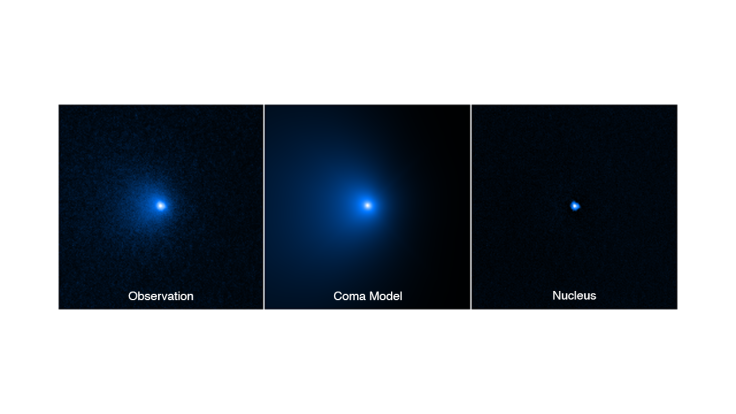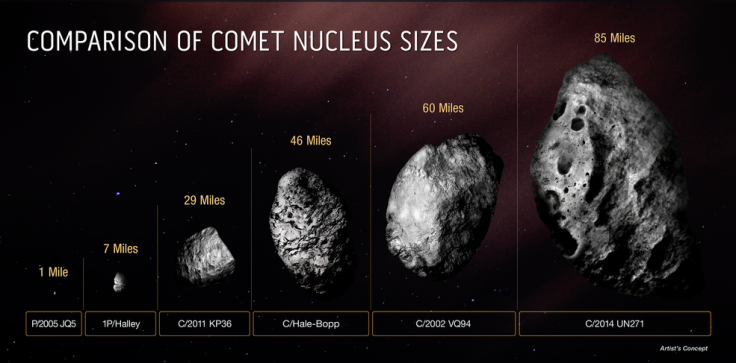
Comets are those big chunks of ice that orbit the sun and sometimes pass by Earth. You may have heard about some famous examples, such as Halley's Comet, in school or on education shows on TV channels like National Geographic and the Discovery channel.
One comet may be the talk of the town soon in both lectures and recent TV episodes.
Experts at the National Aeronautics and Space Administration (NASA) have recently confirmed that a specific gigantic comet is the largest humanity has ever seen or observed.
Bernardinelli-Berstein Comet Details
A recent NASA report mentioned that astronomers had determined the size of the largest icy comet nucleus ever seen.
According to their measurements and the photos from the Hubble Space Telescope, C/2014 UN271, more commonly known as the Bernardinelli-Bernstein comet, has the largest comet nucleus humanity has ever seen.
The comet is named after astronomers Pedro Bernardinelli and Gary Bernstein, who first discovered it on October 14, 2014. It has an estimated diameter of 80 miles across or around 129 kilometers, which makes it larger than the state of Rhode Island. It is also about 50 times larger than those found at the heart of the most known comets.

For comparison, Halley's comet, the most popular of its kind, has a nucleus size of 9.3 by 5 miles or 15 kilometers by eight kilometers, per NewScientist. Meanwhile, comet C/2002 VQ94, the previous record holder of "the largest comet nucleus," has an estimated nucleus size of 60 miles or around 97 kilometers.
University of California, Los Angeles (UCLA) professor of planetary science and astronomy David Jewitt mentioned in "The Astrophysical Journal Letters" that they've always suspected the Bernardinelli-Bernstein comet to be big because of its brightness at such a large distance. He also added that it is "the tip of the iceberg" for the thousands of comets too faint to see in the more distant parts of the solar system.
Jewitt co-authored "The Astrophysical Journal Letters."
Experts were able to confirm the comet's size thanks to Hubble's observations and photos when the comet was about 2 billion miles or 3.2 billion kilometers from the sun, with it being at a temperature of about 348 degrees Fahrenheit below freezing, or minus 211 degrees Celcius, per Space.com.
The comet is too far away for Hubble to define its exact size, but the team detected a light signal with the telescope, showing its location. They were then able to use all the Hubble observations they had and were able to determine the size of the comet's nucleus through a computer modeling technique that shows where the comet's coma would be.
The coma is the trail of dust and gas a comet leaves behind as it comes closer to the sun, according to Britannica.
Where Is The Bernardinelli-Berstein Comet?
As previously mentioned, the comet was about 2 billion miles or 3.2 billion kilometers from the sun when astronomers were able to measure its nucleus. This distance makes it far away from Earth. It is zooming along in Space at about 22,000 mph or 35,405 kph.
NASA expects that the closest distance the comet will be to Earth is about one billion miles or 1.6 billion kilometers, which would only happen until 2031.
However, if it were to hit Earth, humanity may not be able to stand a chance.
NASA's David Morrison mentioned that if a comet is 10 kilometers across or larger and if its impact carries an energy of more than about 100 million megatons, the event would cause damage to the global environment so extensive that it would lead to mass extinction, per Scientific American. This event would be similar to what the dinosaurs experienced 65-66 million years ago.









